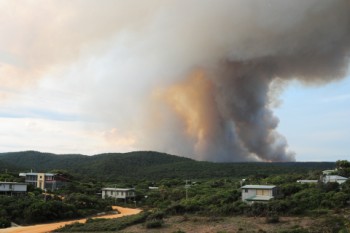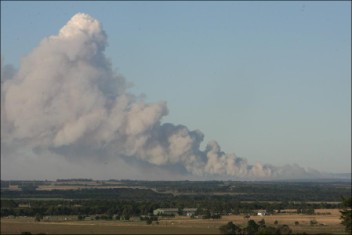There may be discussions about its cause, but there is overwhelming evidence that climate change is having a profound effect on the forests of the world. We don’t have the luxury of debate–it is here.
There may also be profound changes in how we fight fire, where the fires occur, the length of the fire seasons, and the number of personnel and dollars needed to suppress fires. Some of these changes in fire management are already occurring.
Here are some excerpts from an excellent article in the Guardian.
For many years, Diana Six, an entomologist at the University of Montana, planned her field season for the same two to three weeks in July. That’s when her quarry — tiny, black, mountain pine beetles — hatched from the tree they had just killed and swarmed to a new one to start their life cycle again.
Now, says Six, the field rules have changed. Instead of just two weeks, the beetles fly continually from May until October, attacking trees, burrowing in, and laying their eggs for half the year. And that’s not all. The beetles rarely attacked immature trees; now they do so all the time. What’s more, colder temperatures once kept the beetles away from high altitudes, yet now they swarm and kill trees on mountaintops. And in some high places where the beetles had a two-year life cycle because of cold temperatures, it’s decreased to one year.
Such shifts make it an exciting — and unsettling — time to be an entomologist. The growing swath of dead lodgepole and ponderosa pine forest is a grim omen, leaving Six — and many other scientists and residents in the West — concerned that as the climate continues to warm, these destructive changes will intensify.
Across western North America, from Mexico to Alaska, forest die-off is occurring on an extraordinary scale, unprecedented in at least the last century-and-a-half — and perhaps much longer. All told, the Rocky Mountains in Canada and the United States have seen nearly 70,000 square miles of forest — an area the size of Washington state — die since 2000. For the most part, this massive die-off is being caused by outbreaks of tree-killing insects, from the ips beetle in the Southwest that has killed pinyon pine, to the spruce beetle, fir beetle, and the major pest — the mountain pine beetle — that has hammered forests in the north.
These large-scale forest deaths from beetle infestations are likely a symptom of a bigger problem, according to scientists: warming temperatures and increased stress, due to a changing climate. Although western North America has been hardest hit by insect infestations, sizeable areas of forest in Australia, Russia, France, and other countries have experienced die-offs, most of which appears to have been caused by drought, high temperatures, or both.
One recent study collected reports of large-scale forest mortality from around the world. Often, forest death is patchy, and research is difficult because of the large areas involved. But the paper, recently published in Forest Ecology and Management, reported that in a 20,000-square-mile savanna in Australia, nearly a third of the trees were dead. In Russia, there was significant die-off within 9,400 square miles of forest. Much of Siberia has warmed by several degrees Fahrenheit in the past half-century, and hot, dry conditions have led to extreme wildfire seasons in eight of the last 10 years. Russian researchers also are concerned that warmer, dryer conditions will lead to increased outbreaks of the Siberian moth, which can destroy large swaths of Russia’s boreal forest.
While people in some places have the luxury to doubt whether climate change is real, it’s harder to be a doubter in the Rocky Mountains. Glaciers in Glacier National Park and elsewhere are shrinking, winters are warmer and shorter, and the intensity of forest fires is increasing. But the most obvious sign is the red and dead forests that carpet the hills and mountains. They have transformed life in many parts of the Rockies.
It is interesting that normal amounts of precipitation combined with warmer temperatures can translate into drought:
Continue reading “Climate change: beetles, fire, and aspen”





